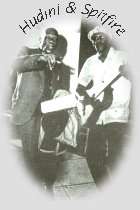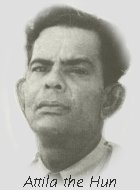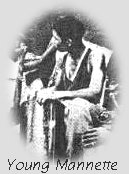




|

Historical Settings of
T and TFrom A Colonial Heritage Spain received the island of Trinidad as part of the fief of Christopher Columbus and controlled the island for nearly 300 years.
The Spaniards subdued and enslaved the native Caribs and Arawaks but until the late 1700s paid little attention to Trinidad as other ventures were more profitable. As a result, Trinidad's population was only 2,763 in 1783. Amerindians composed 74 percent of that total (2,032). Although African slaves were first imported in 1517, they constituted only 11 percent of the population (310) in 1783.
Indeed, the slave total was barely larger than the 295 free nonwhites who had emigrated from other islands. The remaining 126 Trinidadians were white.
In an effort to make Trinidad more profitable, the Spanish opened the island to immigration in 1776 and allowed Roman Catholic planters from other Eastern Caribbean islands to establish sugar plantations. Because French Catholic planters on the islands that had been granted to Britain after the Seven Years' War (1756-63) were subject to religious and political discrimination, they were attracted by Spanish promises of land grants and tax concessions in Trinidad.
In seeking immigrants, Trinidad linked landownership to the ownership of slaves; the more slaves, the more land. Land grants were also given to free nonwhite immigrants, and all landed immigrants were offered citizenship rights after five years. As a result of this new policy, thousands of French planters and their slaves emigrated to the island in the 1780s and 1790s. By 1797 the demographic structure of the island had changed completely.
The population had expanded dramatically to 17,718, about 56 percent of whom were slaves. There were also 4,476 free nonwhites and 2,151 whites. The Amerindian community declined by 50 percent from the level achieved 14 years earlier and represented only 6 percent of the total population. As of 1797, there were hundreds of sugar, coffee, and cotton plantations producing for export.
The British, who were at war with Spain and France, conquered Trinidad in 1797 during the Caribbean unrest that followed the French Revolution. Trinidad was formally ceded to Britain in 1802. After debating how to govern the new island, the British finally decided on crown colony rule under a governor.
As this was occurring, investors and colonists expanded the sugar plantations to take advantage of high sugar prices. During the first five years of British rule, the number of sugar estates increased markedly. The British census of 1803 counted 28,000 people, a tenfold increase in 20 years; of these, there were 20,464 slaves, 5,275 free nonwhites, and 2,261 whites. About half of the free people and most of the slaves spoke French, and the rest of the population was divided between Spanish and English speakers. The Amerindian population continued to decline, with several hundred members scattered in rural settlements.
A decade after slavery was abolished in 1834, the British government gave permission for the colonies to import indentured labor from India to work on the plantations. Throughout the remainder of the century, Trinidad's population growth came primarily from East Indian laborers. By 1871 there were 27,425 East Indians, approximately 22 percent of the population of Trinidad and Tobago ; by 1911 that figure had grown to 110,911, or about 33 percent of all residents of the islands. Small numbers of Chinese, Portuguese, and other groups also immigrated, contributing to the multiracial character of the island.
Tobago , Robinson Crusoe's island, changed hands twenty-two times between 1626 and 1814, as various European countries tried to secure possession of its safe anchorages. Its population in 1791 was 15,102, about 94 percent of whom were slaves. The British finally acquired Tobago permanently in 1814, after several previous attempts to conquer the island. The British continued to govern through a local assembly that they had installed during an earlier conquest of Tobago in 1763. Under this arrangement, political control rested with a number of British civil servants and the assembly, elected by a tiny electorate and supported by the sugar plantations.
By the late nineteenth century, Trinidad and Tobago were no longer profitable colonies because sugar was being produced more cheaply elsewhere. In 1889 the British government united Trinidad and Tobago in an effort to economize on government expenses and to solve the economic problems of the islands. In 1898 Tobago became a ward of Trinidad , thereby losing its local assembly, which was not reinstated until 1980. Subsequently, Britain ruled Trinidad and Tobago as a crown colony until 1956. Between 1889 and 1924, the government of Trinidad and Tobago included, in addition to its governor, a wholly appointed Legislative Council. The first step toward self-government was taken in 1925 when there were limited elections to the Legislative Council and to the governor's Executive Council.
As noted, the populations of both Trinidad and Tobago owe their main origins to massive eighteenth- and nineteenth-century importations of African slaves and East Indian indentured servants who were needed to work on the sugar plantations. When the sugar industry declined, unemployment became widespread. In the early twentieth century, oil replaced sugar as the major export; oil is a capital-intensive industry, however, and it did not solve the problem of unemployment in Trinidad and Tobago.
The labor movement began to assume importance after World War I, spurred by the return of Trinidadians who had fought with the British armed forces. The most important of these was Captain Andrew Arthur Cipriani, a white man of Corsican descent, who had served as commander of the West India Regiment. Cipriani resented the fact that the West India Regiment was not allowed to fight for the British Empire but instead was sent to Egypt, where its forces served as labor battalions. Upon his return to Trinidad , Cipriani organized the masses, giving them national pride and teaching them to oppose colonialism.
He revitalized the Trinidad Workingman's Association, which was renamed the Trinidad Labour Party (TLP) in 1934; by 1936 the TLP had 125,000 members. Because Cipriani was white, he was able to transcend the black-East Indian racial dichotomy and became known as "the champion of the barefoot man." In the first elections held for the Legislative Council, Cipriani was elected in 1925 and remained a member until his death in 1945. He was also elected mayor of Port-of-Spain eight times. In these two offices, Cipriani struggled against racial discrimination and fought for constitutional reform, universal suffrage, and better rights for workers.
During the 1930s, Trinidad and Tobago suffered severely from the effects of the worldwide depression. Living standards deteriorated as workers were laid off from the plantations. The situation was aggravated by unjust labor practices. Wages on the sugar estates and in the oil fields were kept low while shareholder dividends in London rose. Workers moved away from Cipriani's moderate policies, and the labor movement became radicalized. Between 1934 and 1937, there were strikes and riots on the sugar plantations and in the oil fields throughout the Caribbean.
Tubal Uriah 'Buzz' Butler, a black Grenadian who had been expelled from the TLP for extremism, emerged as the leader of the black oil workers, who were the best paid and most politicized laborers on the island. Butler called for racial unity among black workers and organized strikes, heading a highly personalized party that was known as the "Butler Party." Although the British labeled Butler as a "fanatical Negro" during the 1930s, Trinidad and Tobago has since recognized him as a man who sensitized the common man to the evils of colonialism. The strikes in Trinidad and Tobago in the 1930s included many incidents of racial violence, culminating in twelve deaths and over fifty injuries in 1937.
The British responded by deploying marines from Barbados and appointing two successive commissions from London to investigate the causes of the riots in Trinidad and Tobago and elsewhere in the Caribbean. Both commissions noted the low wages and poor working conditions throughout the region.
The second commission, chaired by Lord Moyne, which completed its report in 1940, was very critical of the British colonial system in the Caribbean and recommended housing construction, agricultural diversification, more representative government for the islands, and promotion of a middle class in preparation for eventual self-government. Although the Moyne Commission's findings were not made public until after World War II, some of its recommendations were put into effect under the Colonial Development Welfare Act of 1940.
The British government had encouraged the formation of trade unions in the belief that labor organization would prevent labor unrest. After the islandwide strikes of 1937, Butler succeeded Cipriani as the leader of the Trinidadian labor movement. Butler's associate, Adrian Cola Rienzi, an East Indian, organized both oil workers under the Oilfield Workers Trade Union (OWTU) and the sugar workers under the All Trinidad Sugar Estates and Factory Workers Trade Union (ATSE/FWTU). Railroad and construction workers were organized under the Federated Workers Trade Union (FWTU), and a number of smaller unions were also formed.
Following a recommendation of the Moyne Commission, government was made more representative. Constitutional reform in 1925 had provided for six elected members on the twenty-five-member Legislative Council, but franchise restrictions limited voters in the 1925 election to 6 percent of the population. In April 1941, the number of unofficial elected members on the Legislative Council and the governor's Executive Council was increased, giving the elected members a majority. Some of these elected members were included on official committees and the governor's Executive Council, although the governor retained ultimate authority and veto power.
Trinidad and Tobago had been profoundly changed by World War II. For the first time since British annexation, the islands were widely exposed to another foreign influence. The 1941 Lend-Lease Agreement (also called the Bases-for-Destroyers Agreement) between the United States and Britain included ninety-nine-year leases of the deepwater harbor at Chaguaramas to the United States Navy and of Waller Field in central Trinidad to the United States Army. Many United States and Canadian personnel were brought in to work at these bases, and thousands of Trinidadian workers were employed at the bases for higher wages under better conditions than ever before. As a result, by the end of World War II many Trinidadians had become used to a higher standard of living and wanted to keep it.
Although the election in 1946 was the first under universal adult suffrage, less than half of the registered voters cast ballots. The trade unions did not consolidate into a cohesive political entity. The labor vote fragmented, as blacks and East Indians divided and as racial slurs became a common part of campaign rhetoric. Butler, who had been detained throughout the war, was released from jail and campaigned for the Legislative Council, but he was defeated by Albert Gomes, a trade unionist of Portuguese descent.
The labor movement was unable to gain a majority because no leader could command the widespread support of both the blacks and the East Indians, a pattern that continued throughout the ensuing forty years. The middle class--comprising primarily blacks and a smaller number of East Indians--came to dominate the political scene in the crucial elections that led to independence in 1962 and has dominated it into the late 1980s.


Trinidadandtobagonews.com is a not-for-financial-profit website.
We encourages persons to reproduce, reprint, or broadcast Staff articles, links, bylines and comments provided that any such reproduction is done in a not-for-profit media and identifies the original writer and source. Some articles on our websites are reproduced under the fair use policy. Check with writers for permission to reproduce articles beyond fair use.
|
|


|